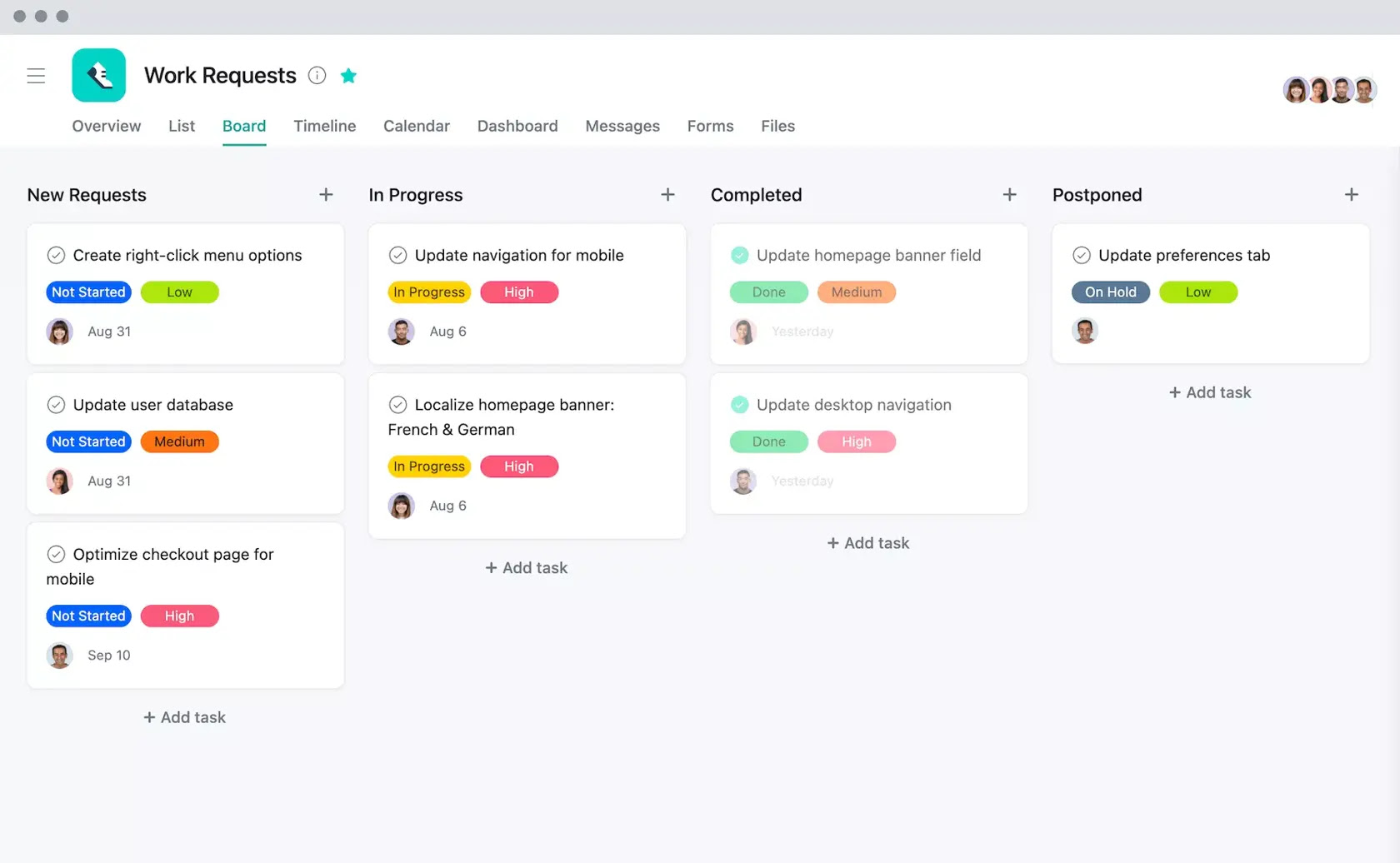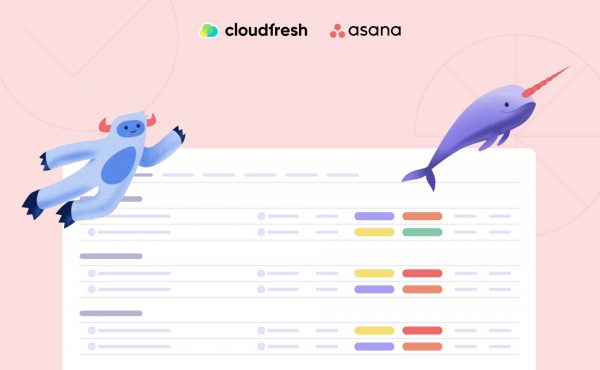All About Requirements Traceability Matrix: How to Create & Use It
How Asana Can Help with Team Workload Management & Why It Matters
Workload management isn’t just a buzzword; it’s the foundation of a productive, healthy team. At its core, effective workload management is about balancing everyone’s tasks so that no one feels overburdened or undervalued. When managed right, it prevents burnout and builds team trust, making the work environment a place where everyone feels they’re contributing fairly. Imagine a team where each member is focused, balanced, and able to tackle projects with enthusiasm—that’s the power of effective workload management.
But what happens when it’s lacking? Poor team workload management leads to an overworked team, confusion over responsibilities, and eventually a decline in morale. It can even drive people away from the job.
Deciphering the Challenge
In many teams, some members take on more work simply because they can handle it, while others find themselves with less. On the surface, this might seem harmless, even efficient, but it sets a risky precedent. Over time, those consistently handling heavier workloads are more prone to burnout, while others might feel their skills are being overlooked. This imbalance can strain collaboration and create a team that’s pulling in different directions.
To avoid these common issues, leaders need clear insight into each team member’s workload. This means understanding not just the number of tasks each person has but also their complexity and deadlines. Armed with this kind of visibility, you will be able to allocate resources more thoughtfully and match tasks with people’s capacities and strengths.
Cementing Concrete Expectations
A direct yet often overlooked part of managing team workload effectively is setting clear expectations. Think of expectations as the roadmap guiding each team member. Without clarity, even simple tasks can become time-consuming, leading to unnecessary stress and delays. How to manage team workload and make sure everyone is on the same page, then?
- Define Objectives: Every project or task should have a clear objective that team members understand. Don’t assume that a brief explanation is enough. Be specific about what success looks like for each task.
- Clarify Priorities: Not all tasks are equal. Helping team members understand which tasks are priorities means they’ll spend their energy where it matters most.
- Create Realistic Deadlines: When assigning work, think about realistic timelines. Deadlines should push the team toward productivity without causing unnecessary pressure. Regularly review timelines to ensure they’re still doable.
Although seemingly obvious, these expectations mean less time spent on miscommunication and more on actual work.

Tools and Techniques for Better Workload Management
Team workload management tools have become essential for giving teams real-time visibility into tasks and progress. With Asana software, managers can see who’s doing what, track each step of a project, and adjust work allocations if someone seems overloaded. But effective workload management also relies on strategies that don’t require a tool.
Here are some helpful techniques:
- Prioritization: This sounds simple, but prioritizing is powerful. Teach your team to rank tasks by urgency and importance, focusing on high-impact work first. This helps them feel more accomplished and less overwhelmed by the “noise” of less critical tasks.
- Resource Leveling: Resource leveling means adjusting project timelines based on team availability. If a project is on the critical path but a key player is overloaded, it’s worth rescheduling or reassigning tasks. It’s all about pacing the work according to capacity.
- Time Blocking: Encourage your team to use time-blocking techniques, setting aside specific hours for deep work. This creates uninterrupted work periods to tackle high-focus tasks while blocking out distractions like email and meetings.
These methods help prevent overload, especially when paired with regular check-ins to ensure people are on track and confident with their workload.
Embracing Flexibility in Workflow
No team workload management strategies will succeed if they’re overly rigid. Projects change, priorities shift, and sometimes things don’t go as planned. Being open to flexibility is one of the most important aspects of managing a team effectively. Flexibility isn’t about letting standards slip—it’s about understanding that people need room to adapt when things get tough.
Regularly assess your team’s workload to see if there’s a need to shift tasks around. Encourage team members to speak up whenever they feel overwhelmed. This culture of adaptability will make your team resilient and apt at handling surprises without falling apart.

Communication Is Everything
Effective team workload management depends on communication—both from managers and team members. Create a habit of open communication within your team, where everyone feels comfortable discussing their workload honestly. Weekly or bi-weekly check-ins are a great way to make space for these conversations. They don’t have to be long or formal but should give people a chance to raise concerns.
Transparency about goals and expectations is key, too. When the entire team understands the overall objectives, they’re more likely to support each other, cover gaps, and find a common focus. Communication keeps the workload visible, manageable, and balanced among everyone involved.
Measuring and Improving Team Workload Management Practices
Workload management isn’t a one-time effort. It’s a continuous process that benefits from feedback and improvement. Use metrics to understand how effective your workload strategies are. Are deadlines consistently met? Do team members report satisfaction with their workload? A good workload management system should make the team’s life easier, not harder.
Here are a few signs that things might need fixing:
- If deadlines are often missed, workloads might be too high, or timelines too ambitious. Adjust as needed to avoid this pattern.
- Regularly check in with your crew to gauge morale. If people seem consistently tired or frustrated, it’s a red flag.
- If certain team members aren’t using their core skills, think about redistributing tasks to make the best use of everyone’s strengths.
Use these insights to tweak your approach and make workload management genuinely benefit the team. Sometimes, a small change sets off a ripple effect that makes a big impact.
At the end of the day, team workload management isn’t limited to appointing tasks and meeting deadlines. Your main focus should be making the environment adaptable so everybody can perform at their best. With clear expectations, the right tools and strategies, and open communication, you can cultivate a positive culture that values and supports every member of your team.
When workload management is done right, it’s a win-win: projects are completed efficiently, employees stay engaged, and the entire team benefits from a more balanced, productive workplace. And that’s what makes great teams truly stand out.
As a Solutions Partner, Cloudfresh has certified Asana consultants who will help you make that win-win a reality through a mix of discovery, design, and training sessions for teams and processes alike. To request your unique Proof-of-Concept, please fill out the form below.













